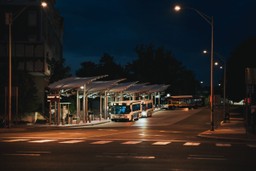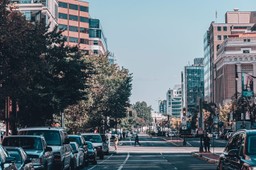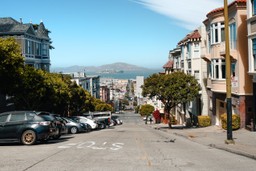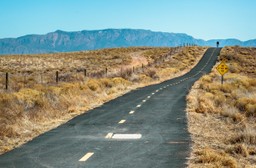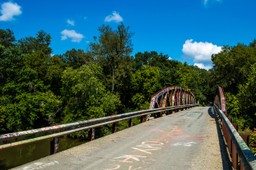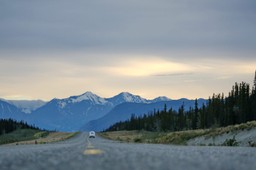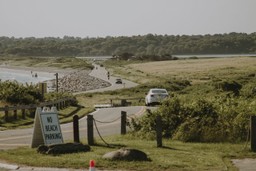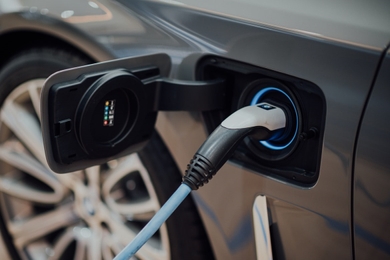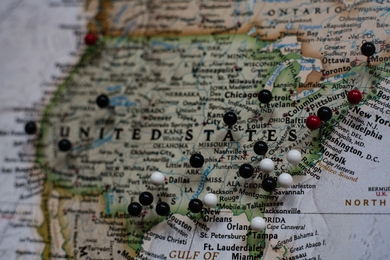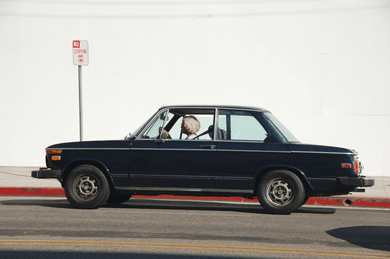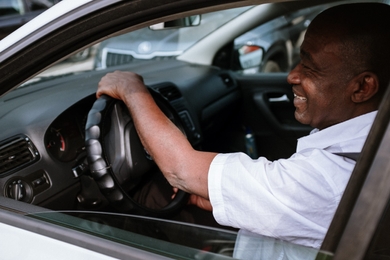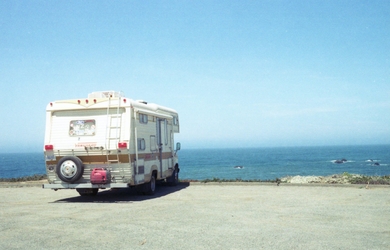Worst Roads in America: What States Are They In? | Gabi
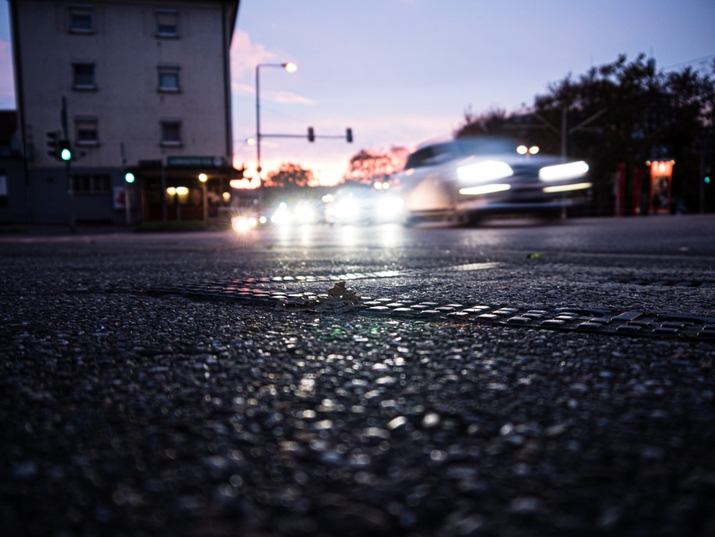
Protect yourself on the road. Compare and save on car insurance with Gabi!
What are the states with the worst roads in America? Over the last decade, we have, unfortunately, seen many rural and interstate roads within America fall into less-than-ideal conditions—to say the least. Between 2009 and 2017, Transportation for America reports that the percentage of roads in poor condition increased by 6% from 14% to 20%. This is problematic for many reasons, but most importantly, for the safety of those traveling on the roads especially as more people are opting for road trips due to COVID-19. But which 10 states have the worst roads in America and why are they so bad?
What Earns a State the Title ‘Worst Roads in America?’
While many states have roads that are beginning to deteriorate, the 10 worst states we list below have the highest percentage of roads (both rural and interstate combined) that are in poor condition. The cause of these conditions includes a variety of factors from a quickly growing population and extreme weather to misaligned priorities and budget issues.
Find out if your state made the list. Here are the top 10 states with the worst roads.
The 10 States with the Worst Roads
10. Connecticut
• Percent of rural and interstate roads in poor condition: 13%
• Percent of rural roads in poor condition: 24%
• Percent of interstates in poor condition: 2%
• Annual amount spent on road repair: 4.60%
• The worst road in the state: U.S. Highway 6
For anyone who lives in the northeastern part of the country, it’s easy to agree that Connecticut is one of the states with the worst roads. This is often due to cold winters which lead to loads of snowfall, extreme freezing and thawing cycles, heavy salting of roads, and a shortened timeline to perform repairs and maintenance in the warmer summer months.
9. Washington
• Percent of rural and interstate roads in poor condition: 13.5%
• Percent of rural roads in poor condition: 21%
• Percent of interstates in poor condition: 6%
• Annual amount spent on road repair: 4.30%
• Worst road in the state: Hart’s Pass
For many Americans, the Pacific Northwest is a beautiful place to live and to visit. An estimated 93,200 people have moved to Washington each year over the past decade. However, strong population growth continues to have a negative effect on the state’s roads, particularly the rural roads, which are showing wear and tear.
8. California
• Percent of rural and interstate roads in poor condition: 13.5%
• Percent of rural roads in poor condition: 21%
• Percent of interstates in poor condition: 6%
• Annual amount spent on road repair: 2.70%
• Worst road in the state: 5 Freeway
It’s no secret that California has often struggled with budget concerns and traffic issues. With one in eight U.S. residents living in the state, it’s no wonder. State taxes are collected for the maintenance of roadways but funds are often allocated to other parts of the state’s struggling budget. California strives to keep up with the ever-growing population, but it continues to be an uphill battle.
7. New Mexico
• Percent of rural and interstate roads in poor condition: 14.5%
• Percent of rural roads in poor condition: 28%
• Percent of interstates in poor condition: 1%
• Annual amount spent on road repair: 3.30%
• Worst road in the state: U.S. Route 285
Between 2000 and 2017, New Mexico had one of the fastest growth rates in the nation. Thanks to a warm climate, an oil boom causing increased economic activity, and being somewhat centrally located in the U.S., it’s no wonder residents enjoy calling this state home. But with inadequate state and local funding for road repairs, we’re seeing poor road conditions, especially on the rural roads.
6. Arkansas
• Percent of rural and interstate roads in poor condition: 14.5%
• Percent of rural roads in poor condition: 26%
• Percent of interstates in poor condition: 3%
• Annual amount spent on road repair: 6.90%
• Worst road in the state: Highway 12
Although Arkansas is one of the least populated states on our list, it is still one of the states with the worst roads. It’s not uncommon to drive over roads and highways that have not been repaired or improved in many years. Much of the state’s transportation funds and time go towards maintaining the twelfth-longest highway system in the country.
5. West Virginia
• Percent of rural and interstate roads in poor condition: 16%
• Percent of rural roads in poor condition: 29%
• Percent of interstates in poor condition: 3%
• Annual amount spent on road repair: 7.80%
• Worst road in the state: Interstate 81
Much like many of the states on this list so far, West Virginia suffers from the usual budget cuts, but it also falls victim to the occasional disastrous flood. However, the main issue is related to staffing and internal management problems between departments. None of the 10 Department of Highway districts in the state have been able to consistently spend the goal of 70% on core maintenance projects. All of these factors contribute to the poor road conditions and deteriorating infrastructure.
4. Alaska
• Percent of rural and interstate roads in poor condition: 17%
• Percent of rural roads in poor condition: 23%
• Percent of interstates in poor condition: 11%
• Annual amount spent on road repair: 13.40%
• Worst road in the state: Dalton Highway
As the most northern state on our list, Alaska is known for its long, cold winters. The lack of sun and warmth can wreak havoc on the state’s roads. It is one of the most ruggedly beautiful states to live in but that can come at a cost. The main road issues can be attributed to permafrost or permanently frozen ground that lies underneath the paved surface. As the climate warms, the road expands, but when it freezes again the road shrinks causing large cracks and potholes.
3. Oklahoma
• Percent of rural and interstate roads in poor condition: 19.50%
• Percent of rural roads in poor condition: 36%
• Percent of interstates in poor condition: 3%
• Annual amount spent on road repair: 8.20%
• Worst road in the state: Turner Turnpike (I-44)
Many of the road conditions in Oklahoma are in need of repair, particularly the rural roads. The state’s roads are riddled with potholes, large cracks, and washboard pavement texture. This is due, in large part, to extreme weather patterns, as it sees sweltering summers and frigid winters. While Oklahoma provides funding for road improvements and maintenance, it is falling behind on their oversight of seeing repairs implemented.
2. Rhode Island
• Percent of rural and interstate roads in poor condition: 21.50%
• Percent of rural roads in poor condition: 41%
• Percent of interstates in poor condition: 2%
• Annual amount spent on road repair: 4.20%
• Worst road in the state: Interstate 295 South
Rhode Island’s roads are old, bumpy, and full of potholes. While the state tries to keep up with on-going maintenance and repairs, it turns out to be a feeble attempt to use a short-term solution to fix a long-term problem. Extreme weather changes are the main factor due to heavy snowfall, freezing temperatures, and frequent salting of the roads.
1. Hawaii
• Percent of rural and interstate roads in poor condition: 25.50%
• Percent of rural roads in poor condition: 32%
• Percent of interstates in poor condition: 19%
• Annual amount spent on road repair: 3.60%
• Worst road in the state: Kahekili Highway
Hawaii is popular for its photo-worthy sunsets and gorgeous white, sandy beaches. Despite this, it is sometimes referred to as the “pothole capital” by locals. And because of this, Hawaii tops our list for the worst roads in America. Weather plays a big factor here since the climate is tropical with lots of rain and intense sun for days on end. The constant rain and humid environment erodes many of Hawaii’s roadways and makes for unstable infrastructure.
Want to save money on car insurance? Find the best coverage in minutes with Gabi!
A Closer Look at Interstates
What are interstates?
Interstate roads are controlled-access highways and systems within the United States that connect each state and allow for ease of travel and economic activity. This network was formed by the Federal Aid Highway Act of 1956 and it’s known as the Interstate Highway System.
Why are interstates important?
As a country, we rely on interstate roads for transporting food, goods, products, and other necessities. Many of these items are delivered via large trucks and commercial vehicles, which allow for better productivity but add to the congestion and increased road use.
Why are interstate conditions declining nationwide?
A report from the Transportation Research Board showcases the many problems that the Interstate Highway System is now facing such as ever-increasing levels of travel, population booms, traffic congestion, and insufficient funding from the state and local governments— not to mention the fact that it is currently 64 years old.
In order to fix this growing problem, “The TRB report concludes that annual investment in the Interstate Highway System should be increased approximately two-and-a-half times, from $23 billion in 2018 to $57 billion annually over the next 20 years.”
A Closer Look at Rural Roads
What are rural roads?
Rural roads primarily provide ease of access to local destinations within a state and are defined as having lower traffic volume due to more rural or residential settings. This makes sense as you move further out from city centers, there are fewer people and less traffic on the roads. Unlike Interstate roads, which are partially funded by the federal government, rural roads are often managed by the state and local government or private parties.
Why are rural roads important?
Of the 4.1 million miles of public roads in the U.S., 2.9 million miles, or 71 % are considered rural roads. These smaller roadways are the backbone of our national economy and allow for supply chains to be set up between customers and manufacturers, farmers and local markets, and aids in the tourism and travel industries.
Our national and local economies depend on roads, bridges, and highways to supply much-needed goods and products. And we want those deliveries to arrive in a productive and safe environment.
Why are rural road conditions declining nationwide?
“Crashes and fatalities occur 2.5 times more often on non-Interstate rural roads than they do on all other roads—a highly disproportionate rate compared to the total miles of travel. TRIP attributes this statistic to the greater likelihood that rural roads have features that reduce safety, like narrow lanes, sharp curves, and pavement drop-offs. When these rural roads are in poor condition, the risk only increases.”
Further, a big problem facing rural roads in the future is a $211 billion backlog in needed repairs and improvements. But instead of allocating what little budget is available for road improvements, they are focusing more on expansion and growth to help accommodate the boom in population. In addition, state transportation revenues are estimated to decrease by 30%, or about $50 million, over the next 18 months due to COVID-19.
Protect Yourself on the Road
While the roads in the U.S. are in need of some serious attention and investment, there are things you can do as an individual to protect yourself and your family while on the road. First, research the routes you plan to take to find out the road conditions ahead of time. Second, always make sure you have the right auto insurance coverage and limits so you can drive with peace of mind. If you plan to buy a car from another state to drive on said roads, give this a read as well!
Want to find out if you could save on car insurance? Gabi can help you easily compare rates side by side to find the best deal.
